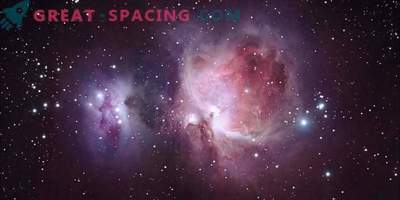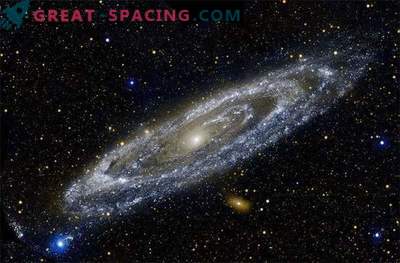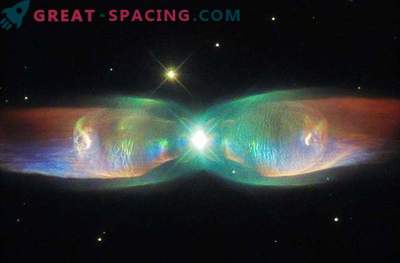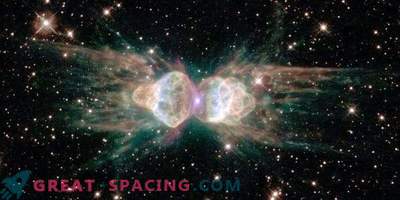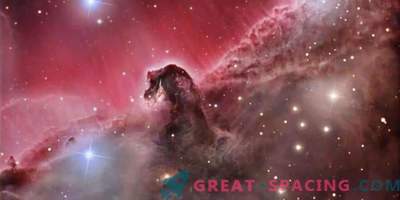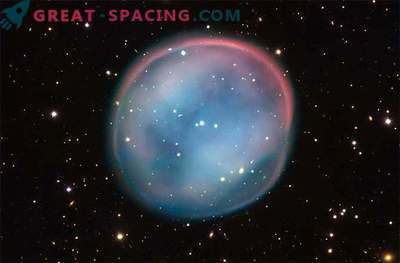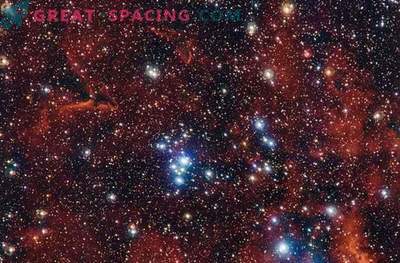
At a distance of 550 light years in the constellation Cassiopeia, IC 63 is a stunning and slightly eerie nebula. She was also called the ghost of Cassiopeia, which is formed by the emission of the nearby unpredictable variable star Gamma Cassiopeia. The star slowly destroys a ghostly cloud of dust and gas.
The constellation of Cassiopeia was named after a vain queen from Greek mythology. In outer space, it forms the recognizable form “W”. The center point is marked with a star Gamma Cassiopeia. This is a blue and white variable surrounded by a gaseous disk. It is 19 times more massive and 65 times brighter than the sun. It is also surprising that its rotational speed reaches 1.6 million km / h - 200 times faster than the star of our system. Rapid rotation results in mass ejection into the surrounding disk.
Gamma Cassiopeia radiation is so strong that it even affects IC 63, which is a few light-years distant from the star. The nebula is visible in a picture taken by the Hubble Space Telescope. The colors demonstrate how the powerful radiation of a distant star affects the nebula. Hydrogen inside IC 63 is bombarded by ultraviolet Gamma Cassiopeia radiation, forcing it to release hydrogen alpha radiation (red).
Due to radiation, IC 63 becomes an emission nebula, but blue light is also seen in the frame. It comes from Gamma Cassiopeia, reflected by dust particles in a nebula. That is, we also have a reflection nebula. IC 63 is not the only object influenced by a powerful star. It enters a part of a larger foggy region, covering 2 degrees in the sky (4 times wider than the full moon).
The region is best observed from the northern hemisphere in autumn and winter. It is located high in Europe and is observed all year round, but due to dimness, a large telescope and a dark sky are required.
